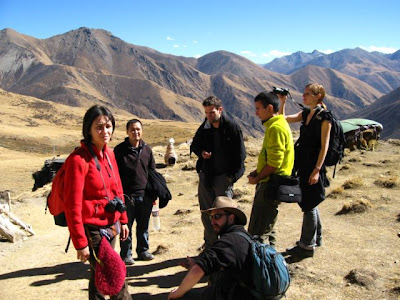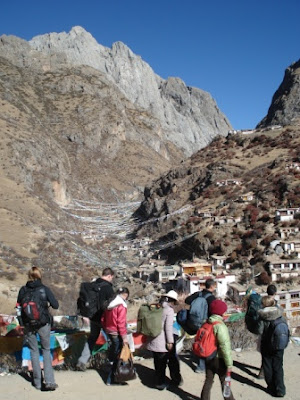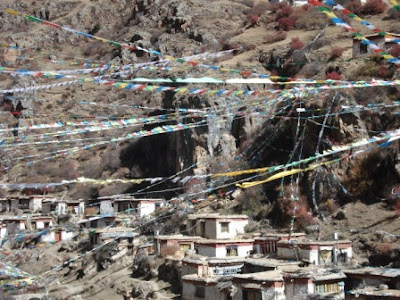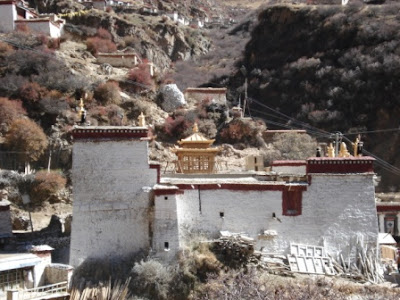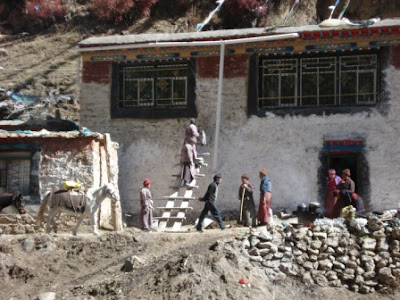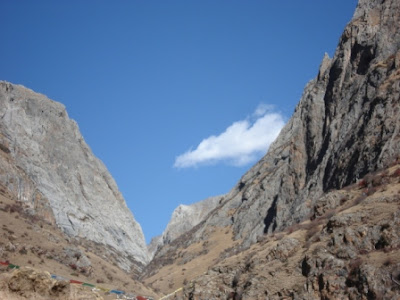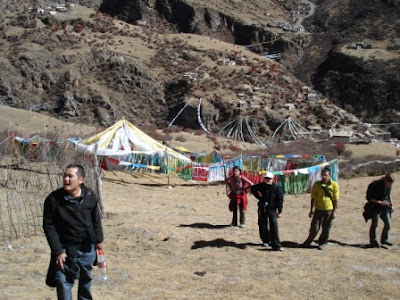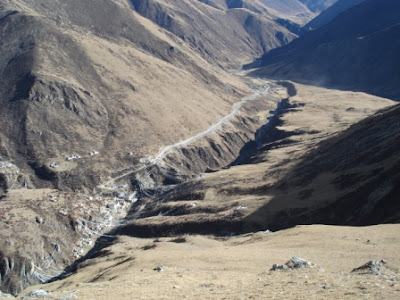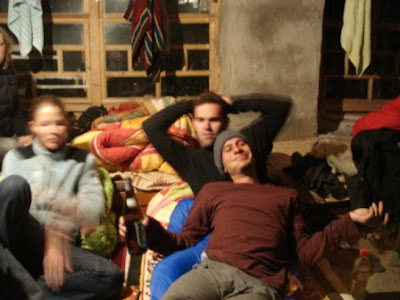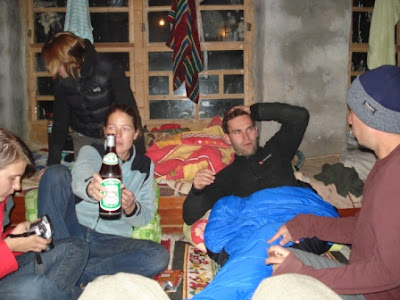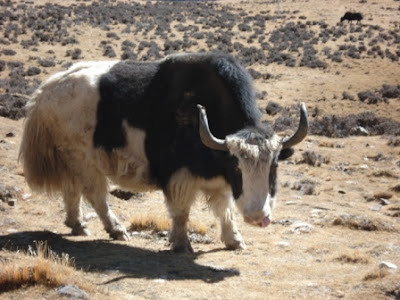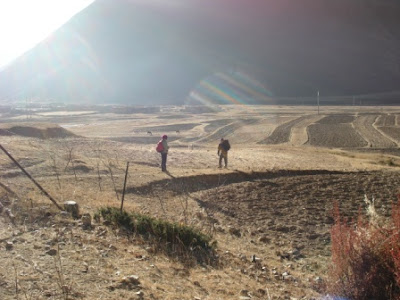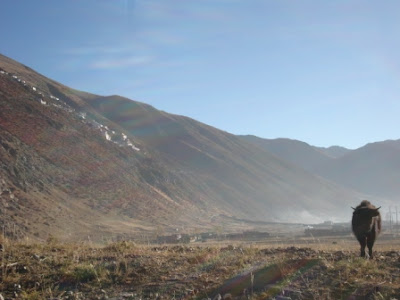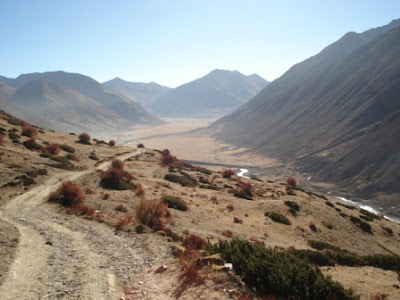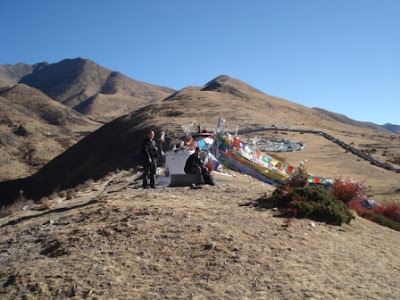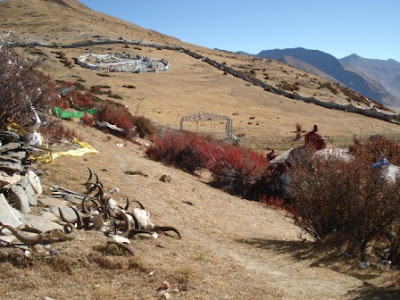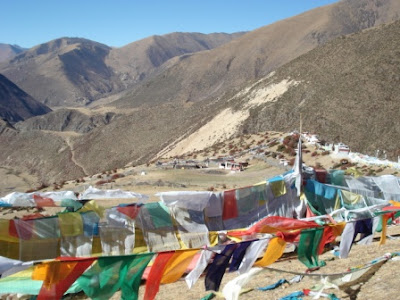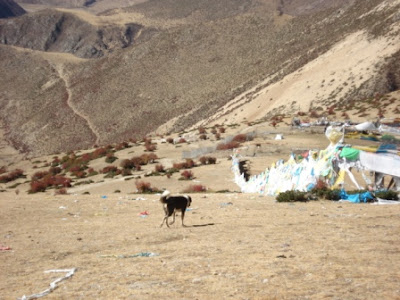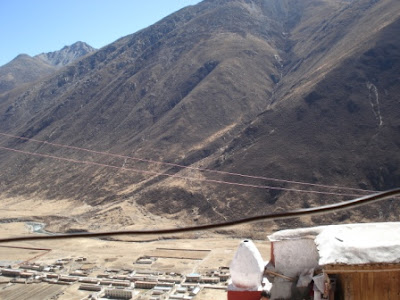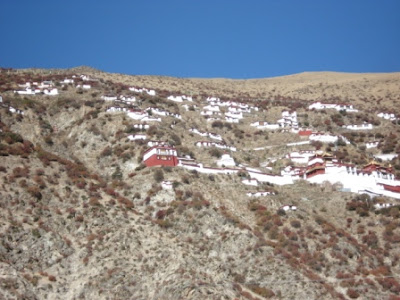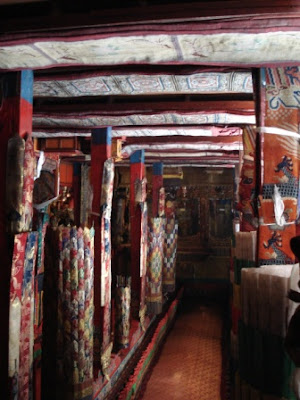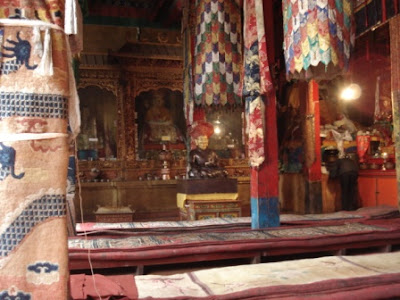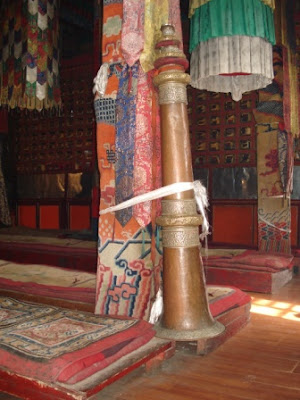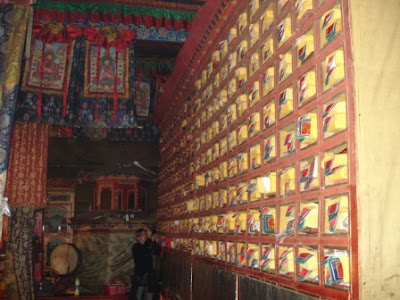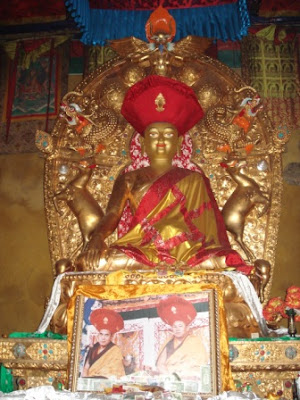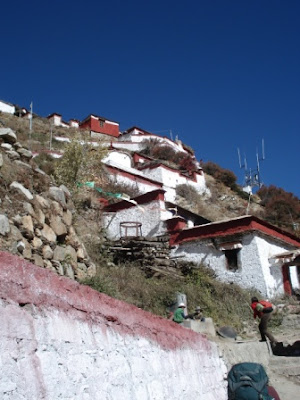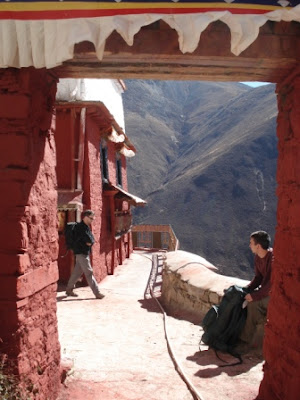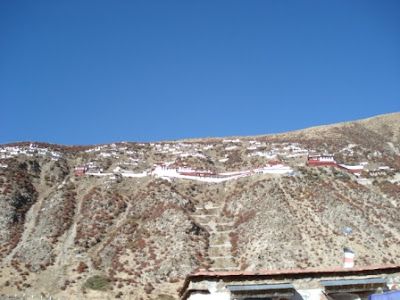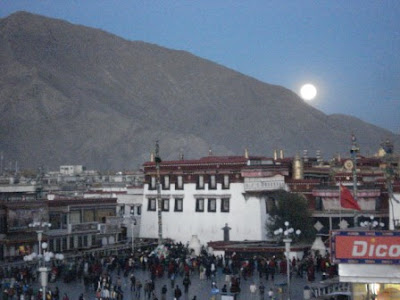 Full moon over the Tsuk lak khang (JoKhang) square.
Full moon over the Tsuk lak khang (JoKhang) square. The moon over DICOS.
The moon over DICOS.New Mandala Restaurant Roof.
 Dinner with friends. Cold weather and wonderful Indian food.
Dinner with friends. Cold weather and wonderful Indian food.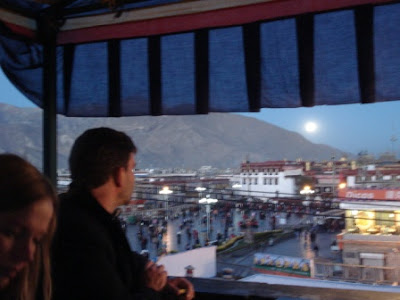 Student life:
Student life: Our favorite Dog Restaurant.
Our favorite Dog Restaurant. Funny faces
Funny faces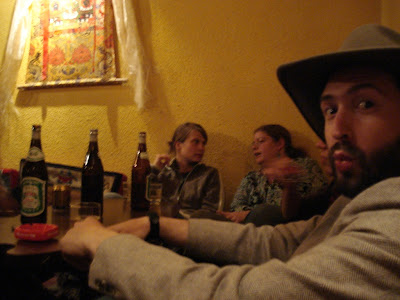

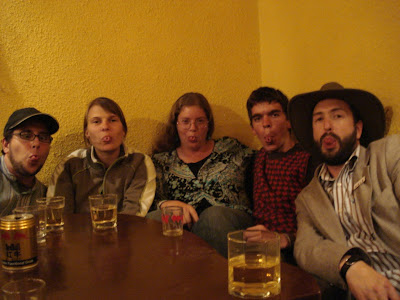
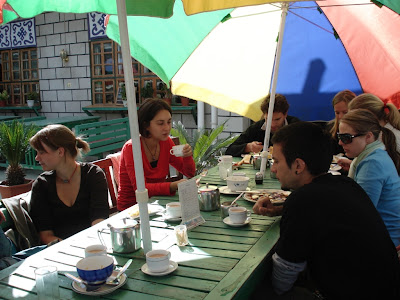 Our favorite Breakfast spot, the Namtso Restaurant at Banakshol hotel.
Our favorite Breakfast spot, the Namtso Restaurant at Banakshol hotel.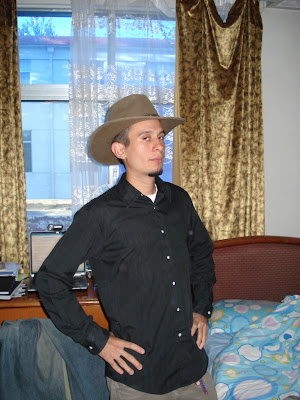 Atisha wearing Marcus's hat and shirt. Well, I couldn't let Atisha attend an important ceremony for evaluation week without a nice shirt, could I?
Atisha wearing Marcus's hat and shirt. Well, I couldn't let Atisha attend an important ceremony for evaluation week without a nice shirt, could I?That's right folks, it's evaluation week, and there's nothing funny about that. Nope, no one's smiling here. I mean, what could be funny about hundreds of students creating a half modern Chinese half 'traditional' Tibetan Nangma experience in the school auditorium for a bunch of suits from Beijing? Maybe if they dance pretty enough and impress their 'nativeness' on the Harvard educated reviewers and number crunchers, then they will allow the school to survive for another ten years? After all, Tibetans are 'The People' too, aren't they? They have been very good comrades so far I think.
 Each class wore identical colored clothing and sang songs in turn, each class trying to out-do the next. Even the medical students sang clapped in unison like they were at Camp Cedar for the summer.
Each class wore identical colored clothing and sang songs in turn, each class trying to out-do the next. Even the medical students sang clapped in unison like they were at Camp Cedar for the summer. Time to shine students! There won't be a university to attend in the spring if you don't present those katas in good order!
Time to shine students! There won't be a university to attend in the spring if you don't present those katas in good order! Sing engineers, Sing!
Sing engineers, Sing!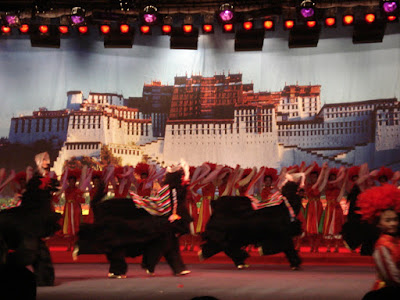 Go Yak man! GO! Yes that is a fake Potala Palace in the background, it is an essential piece of any Nangma, although perhaps not usually of a university playhouse.
Go Yak man! GO! Yes that is a fake Potala Palace in the background, it is an essential piece of any Nangma, although perhaps not usually of a university playhouse.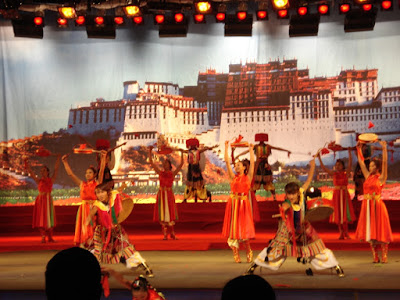 Ah, drummer boys.
Ah, drummer boys. One of the stars of the evening.
One of the stars of the evening.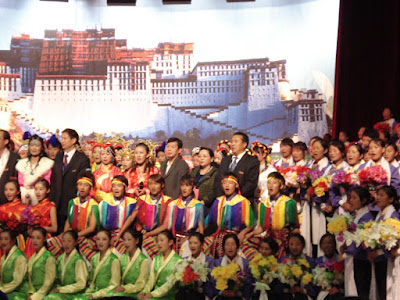 One question, where the reviewers sober at this point? That's them in the suits.
One question, where the reviewers sober at this point? That's them in the suits.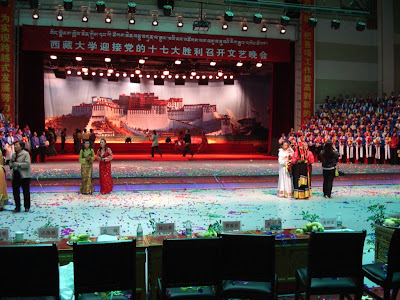 Party's over. I couldn't bare to take too many photos of the simulation, except this next one:
Party's over. I couldn't bare to take too many photos of the simulation, except this next one: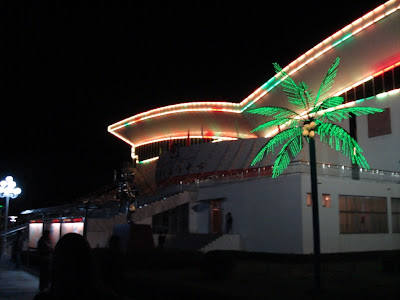
Recall that this is a university campus. How can a plastic palm tree that lights up be the ultimate insult? Well, now you know, about as much as I know.
Because of our exemplary behavior during evaluation week (we didn't do anything at all, meaning we didn't do anything bad), we were invited to a wonderful picnic at the Linka/museum.
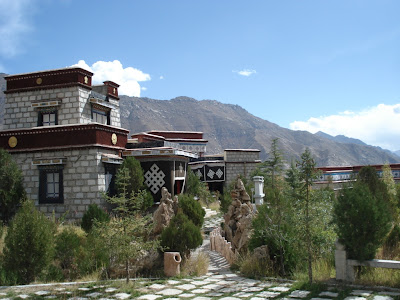
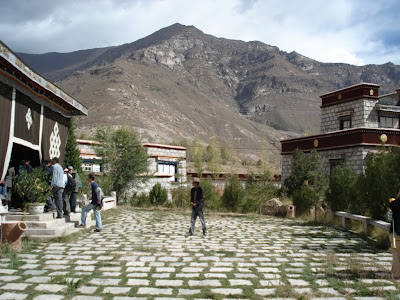 We stayed all day and into the night. We saw Thonmi Sambhota's statue and an exhibition of the Tibetan writing styles through the ages.
We stayed all day and into the night. We saw Thonmi Sambhota's statue and an exhibition of the Tibetan writing styles through the ages.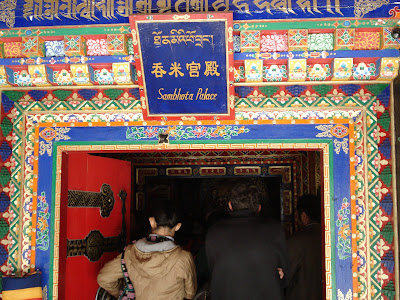
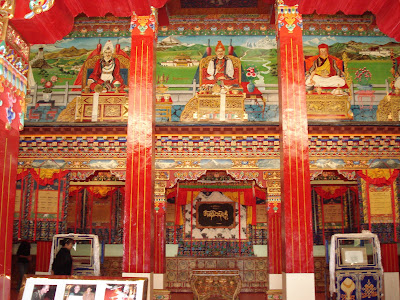

 One of the stranger written styles. This is the Ziyik (gzi yig) writing style, so named because it is written according to the design of the precious stone agate. It was considered beautiful in the shangshung era.
One of the stranger written styles. This is the Ziyik (gzi yig) writing style, so named because it is written according to the design of the precious stone agate. It was considered beautiful in the shangshung era.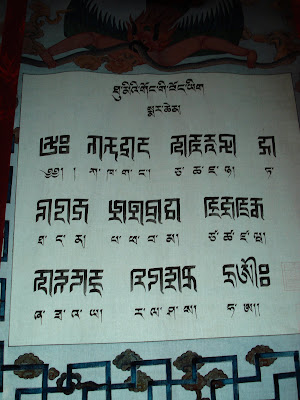 The Mayik (smar yig) style comes in both greater and lesser styles and is said to have been created by the founder of the Bon religion, Tonpa Shenrab, roughly 3000 years ago. The style is based on Persian writing and became an official writing style of the Tubo dynasty in the second century, A.D.
The Mayik (smar yig) style comes in both greater and lesser styles and is said to have been created by the founder of the Bon religion, Tonpa Shenrab, roughly 3000 years ago. The style is based on Persian writing and became an official writing style of the Tubo dynasty in the second century, A.D.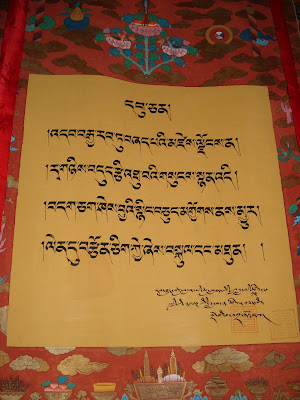 This is the common style of Uchen that I study. It comes from the mid-13th century writer Kyungpo Yutri and his Kyungdri style (khyung bris). There were eight different styles preceding his:
This is the common style of Uchen that I study. It comes from the mid-13th century writer Kyungpo Yutri and his Kyungdri style (khyung bris). There were eight different styles preceding his:1) The square-brick style (so phag gshib 'dra).
2) The cockcrow style (bya pho 'jol 'dra).
3) The scattered grain style (nas sngon phying dkar steng bkram pa 'dra). I am not sure why this is translated so simply, as it seems to me that the full title is something like, "scattering old barley grain on white felt."
4) The pearl-bead style (mu tig star brgyus).
5) The grasshopper style (sbur nag bgrad 'dra). Also known as the Kham style.
6) The jumping fish style [nya mo chu nang nas phyung 'dra (like a female fish jumping from the water.")]
7) The rising lion syle (seng ge gnam l 'phyongs 'dra).
8) The flat-square style (leb ni gru bzhi bde legs).
We also saw half an exhibition of the gyumshi, the classical Tibetan medical text with many tankas (paintings) created based on the text's descriptions.
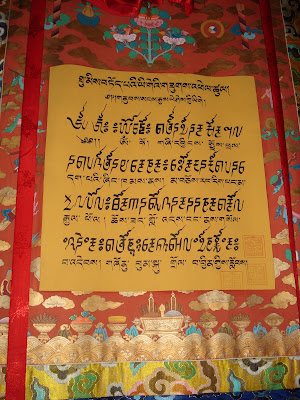
We were offered lunch, alcohol, cigarettes, majong and dice playing, dinner, more of the same, then dancing and singing with lots of drunken and happy teachers.
I can't really describe all that occurred in the evening, suffice to say that all the foreigners were made to sing funny songs, dance around, and drink lots of beer. There were even road sodas!
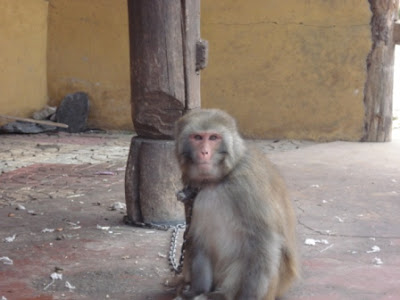 This is probably me in my next life...
This is probably me in my next life...
